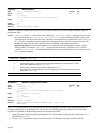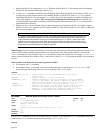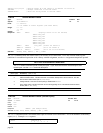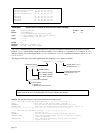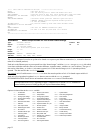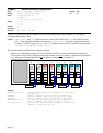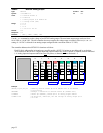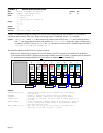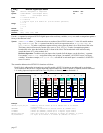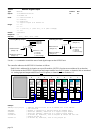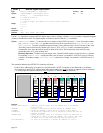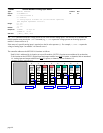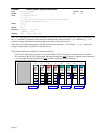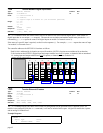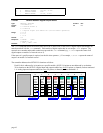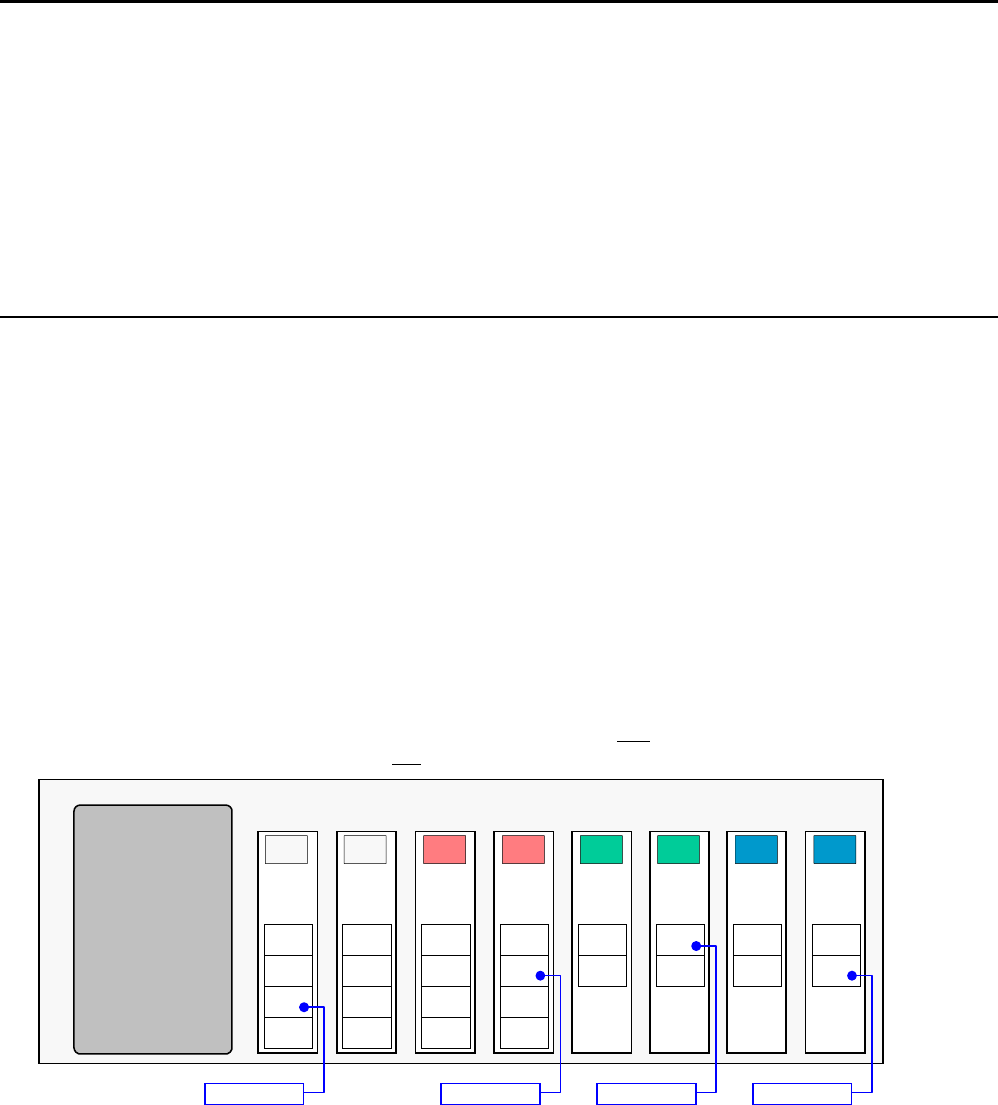
[ \IN ]
Network Digital Input Status
Type:
Network; Assignment or Comparison
Product Rev
Syntax:
n\mIN<=Bbbbb> (see example below)
n\iIN.i (see example below)
Units:
n = network server #
m = module #
i = digital input # on module “m” (for bit-select operation)
Range:
n = 1-6
m = 0-7
j = 1-4
Default:
n/a
Response:
n/a
See Also:
NTIO, \TIN, \TIO, VARB
6K 5.3
Use the
\IN
operand to assign an OPTO22 digital input value to a binary variable (
VARB
), or to make a comparison against a
binary or hexadecimal value.
Syntax:
VARBx=n\mIN
where “
n
” is the network server number of the OPTO22 unit and “
m
” is the I/O module number
(e.g.,
VARB16=2\0IN
). The
\IN
operand can also be used in an expression such as
IF(2\3IN=b11Ø1)
, or
IF(2\3IN=h7F)
. To make a comparison against a binary value, place the letter b (b or B) in front of the value.
The binary value itself must only contain ones, zeros, or Xs (1, Ø, X, x). To make a comparison against a
hexadecimal value, place the letter h (h or H) in front of the value. The hexadecimal value itself must only
contain the letters A-F, or the numbers Ø-9.
Bit Select Operation: To address only one input value, instead of all the inputs, use the bit select (
.
) operator.
For example,
VARB1=2\3IN.3
assigns the binary state of input 3 on module 3 of OPTO22 server 2 to binary
variable 1. In another example,
WAIT(2\3IN.1=b1)
tells the 6K to wait until input 1 on module 3 of OPTO22
server 2 is active.
The controller addresses the OPTO22 I/O locations as follows:
Each I/O bit is addressed by its location on a specific module. (NOTE: I/O points are not addressed by an absolute
32-bit location on the OPTO22.) Digital input and output modules have four
I/O points, or channels, and are numbered
1-4. Analog input and output modules have two I/O points, or channels, and are numbered 1-2.
Digital
Input
Module
Input
1
0
Input
2
Input
3
Input
4
Digital
Input
Module
Input
1
1
Input
2
Input
3
Input
4
Digital
Output
Module
Output
1
2
Output
2
Output
3
Output
4
Digital
Output
Module
Output
1
3
Output
2
Output
3
Output
4
Analog
Output
Module
Output
1
4
Output
2
Analog
Output
Module
Output
1
5
Output
2
Analog
Input
Module
Input
1
6
Input
2
Analog
Input
Module
Input
1
7
Input
2
EXAMPLE: OPTO22 is Network Server #2
2\0IN.3 2\3OUT.2 2\5ANO.1 2\7ANI.2
Example:
2NTIP2,172,54,125,34 ; Identify network server #2 as an OPTO22 unit at IP address
; 172.54.125.34
2NTCONN1 ; Attempt a connection to network server #2 (OPTO22 unit)
2\0NTIO1 ; Server #2 (OPTO22), module #0 is a digital input module
2\1NTIO1 ; Server #2 (OPTO22), module #1 is a digital input module
WAIT(2\1IN.2=b1) ; Wait until input #2 of module #1 on Server #2 (OPTO22) is active
IF(2\0IN=bxx1) ; If input #3 of module 0 on Server #2 (OPTO22) is active ...
page 37



